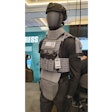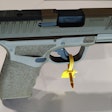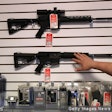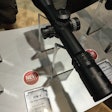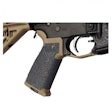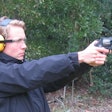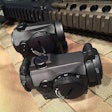For the street officer and the plainclothes detective, the handgun is the go-to weapon of choice because it is portable and convenient. Much debate and discussion has been given to pistol selection, but much less has been devoted to holster options.
What you carry is no less important than what you carry it in and how you deploy it in action. Before a possible engagement begins, keeping the handgun out of the hands of the bad guy is a priority. Being surprised by the bad guy is bad enough; being surprised by the bad guy because of poor holster selection is unacceptable.
For the street officer and those able to carry in plain sight, the handgun is carried on the belt. The visible handgun presents a more difficult retention challenge for the officer as well as a tempting prize for the assailant. For those who carry on the belt in plain sight, a Level II holster is by far the best option.
Level II holsters provide two levels of retention. The first level is a thumb break (button or velcro), followed by a rocking motion or tacticle action that unlocks or disjoints the internal locking mechanism and allows for a quick and smooth draw, while at the same time, preventing the assailant from retaining the gun if he or she should successfully breach the thumb break.
I have seen literally hundreds of these holster types on the market. They are made for the most successful pistol lines for virtually every model of Glock, Sig Sauer, Beretta and Smith & Wesson. The problem is that Level II holsters require a lot of practice to achieve a smooth and quick draw. While quickly navigating the two layers of retention, this takes a lot of practice, particularly when using a generic holster, regardless whether its made of genuine leather, synthetic fabrics, or Kydex polymer.
Enter the custom holster, which I think you should consider. Even if you're a plainclothes detective with a pistol that's hidden from plain sight or want to carry concealed while off duty, you should still prioritize, especially if the fit of the holster does a better job of preventing your rig from printing through clothing and being a possible liability by giving you away.
Although many private holster makers exist, the term custom does not necessarily mean a holster made to order. Galco, Safariland, Bianchi and High Noon offer police holster lines that are made to higher standards of specification and with better materials or options in mind. Fit and finish are given extra attention, resulting in a better eventual contour fit to your belt, body, and gun, once the rig is "broken in."
These better levels of tolerance in the manufacturing allow you to breach the two levels of retention with a smoother action, resulting in a confident and quick on-target draw.
Think of these custom lines as you would a custom shop from a gunmaker or carmaker. Police shooting competitors practice with Kimber and Springfield Armory 1911s from the aforementioned gunmakers' custom shops in the same way that race-car drivers prefer the Mercedes Benz AMG line of custom cars.
While holsters from the "custom" lines of such holster makers as Galco and Safariland can cost 20 to 50 percent more than their respective "generic" lines for the same model of pistols, I think they should be given consideration by those serious about practicing and gaining every possible advantage against the bad guy.
Whether you carry in plain sight on a duty belt, or concealed in a plainclothes or off-duty situation, quick retention and presentation/draw are universally important.
A quality holster that offers better fit, finish, and attention to detail should be given serious consideration. As always, please check with your agency or commanding officer as to the approved options for holsters. You may find that the extra cost is well worth it.










